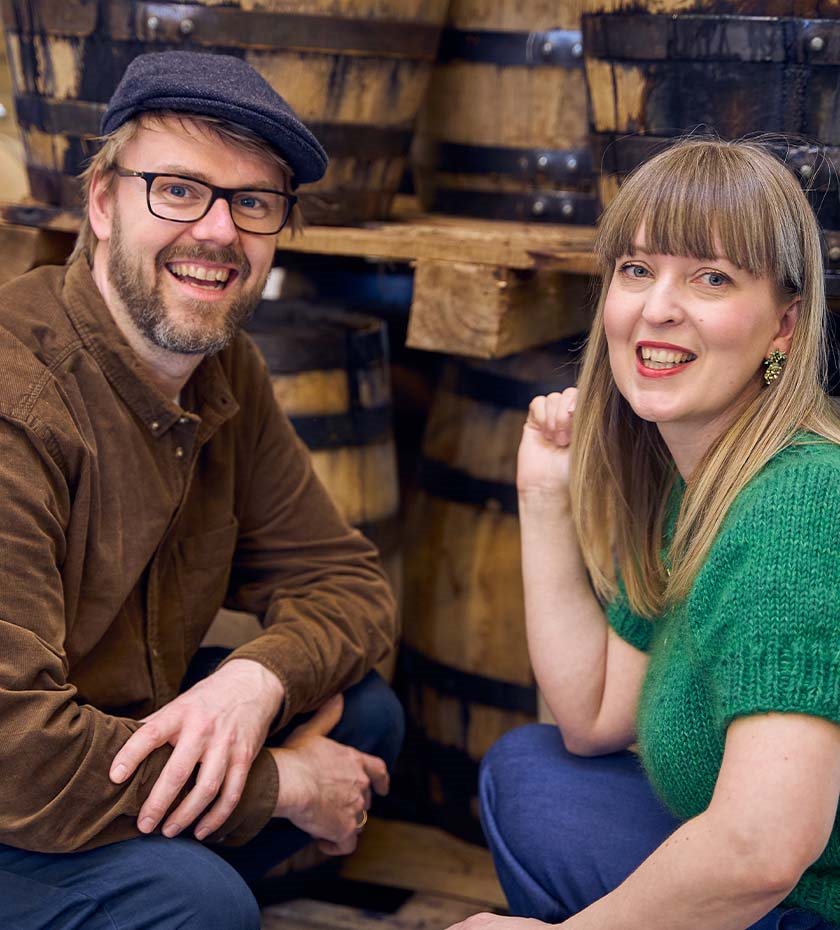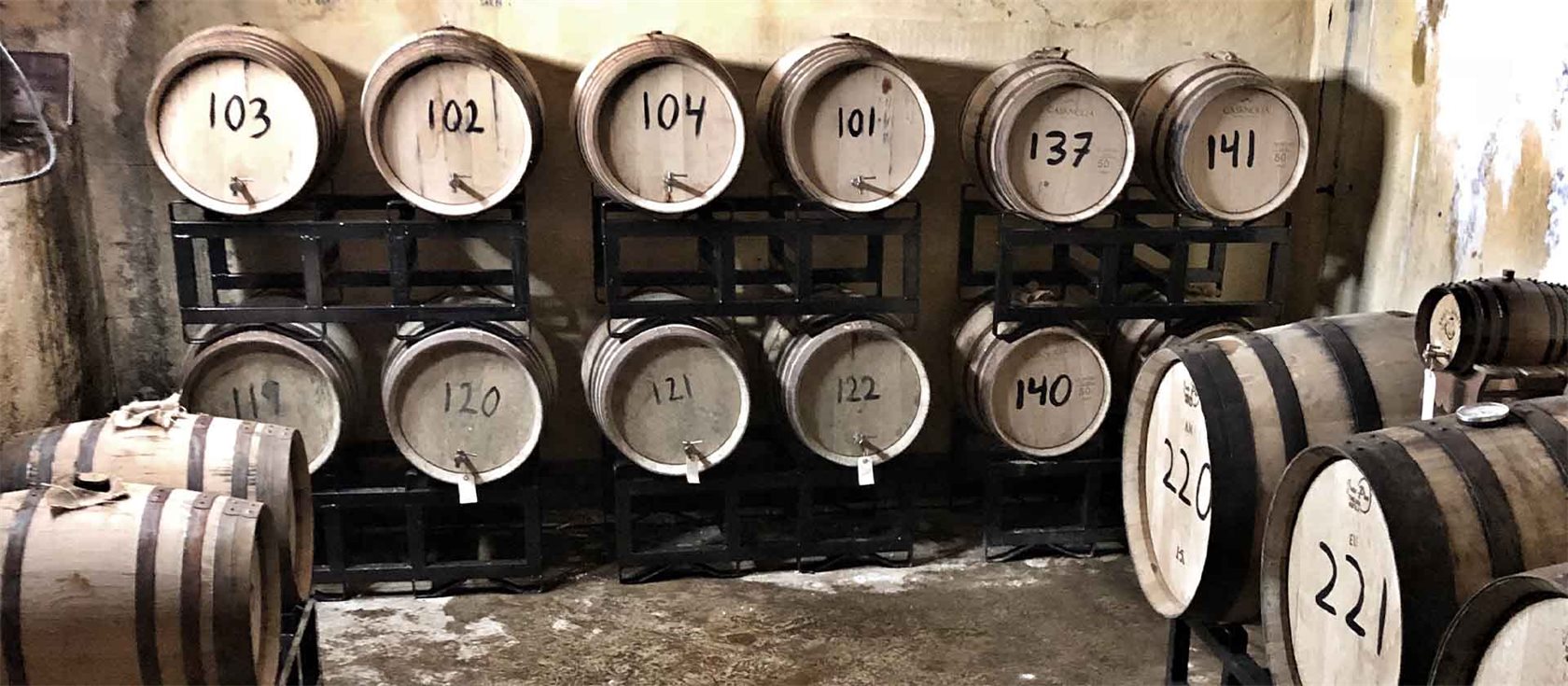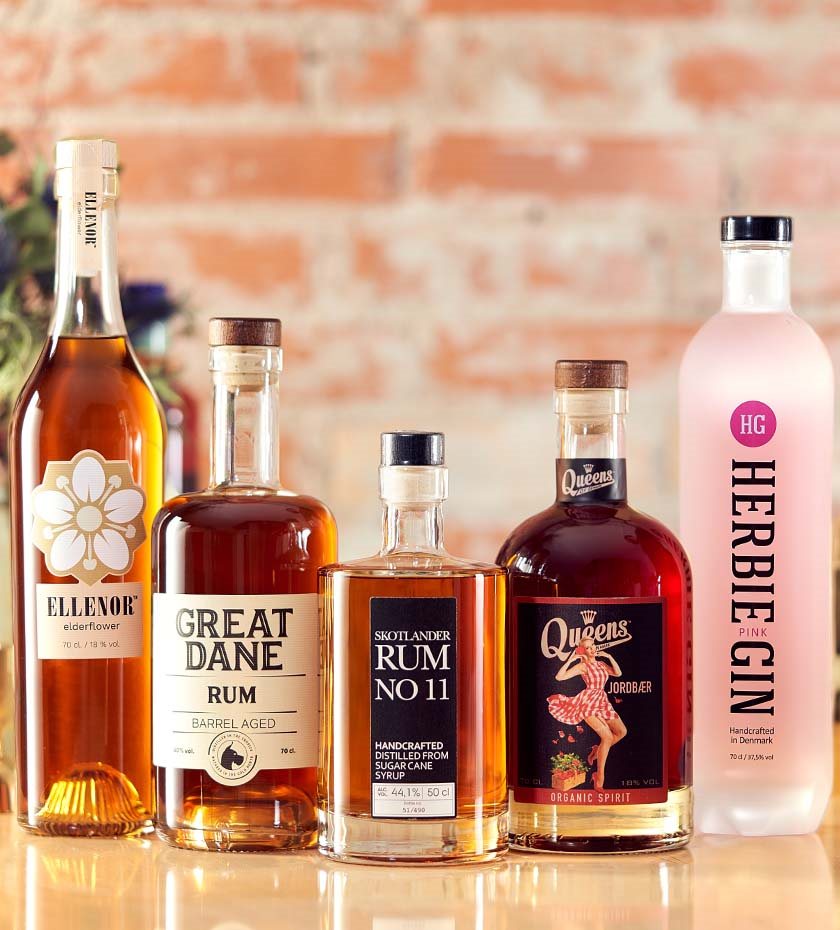Danish rum adventure in Pandrup

Back in the good old days, the different types of spirits were strongly geographically defined. Whisky came from Scotland. Maybe, if we stretch it, from Ireland. Cognac, of course, originated in France. In Denmark, we processed potatoes and grain into schnapps. Rum, on the other hand, was something we associated with the warmer climates of the Caribbean sun and Central America.
But actually, the cooler Danish climate can give rum something very special that is not possible to achieve in Jamaica, Honduras or the US Virgin Islands. And the very fact that the fermentation process in a cooler coastal climate like Denmark's takes significantly longer helps to release the flavors that make Danish rum special. Something that for Anders and Titte Skotlander has resulted in numerous gold medals at competitions around the world.
The international recognition was what the Danes needed to accept that a quality rum could also be produced in the small North Jutland town of Pandrup.

It began on the kitchen table
"But it all actually started in Copenhagen, where my boyfriend and I lived in a small two-room apartment in Christianshavn. It was back in 2014. We had been on a summer vacation in Blokhus, where we one evening enjoyed the taste of a good rum. We agreed that it had something special. We said to each other, 'We have to try to make it ourselves'," Anders Skotlander explains.
Back home, the experiments started on the kitchen table. After six months, they had achieved a result that they were more than happy with. So, they started a small production in a rented basement room in Strandgade 32. And one day in early 2015, a delivery man showed up with the first 1,000 bottles, filling up the small apartment.
"There were rum bottles everywhere. In the living room, in the kitchen and in the bedroom. In fact, it was only then that we asked ourselves how we could sell our rum. But as Titte said: 'There are not that many bottles, so in the worst case scenario, we'll just drink them ourselves'!"
But it didn't turn out that way. "We had read that there were rum festivals and competitions around the world. So, we sent three bottles to all of them. Miami, London and Berlin. They all got our rums for blind taste tests. Then a really long time went by and we didn't hear anything. Until one day we got an email from Miami telling us that we had won a gold medal for our light rum. In a blind tasting test, where only the best got a medal."
This was the starting point that Anders and Titte Skotlander needed. Until then, wine merchants, bars and restaurants had been reluctant to incorporate Danish rum into their drinks menus. "This is when we really realized that producing good rum was only twenty percent of the work. The rest is about marketing and business."

Quit well-paid TV jobs
Until then, both Anders and Titte Skotlander had had well-paid jobs in the Danish TV and media world as TV producers. Titte Skotlander has worked on major productions such as Masterchef and X-Factor, while Anders Skotlander mainly produced films and TV commercials.
"But we took a gamble and quit our jobs. Moved to North Jutland and set up production in premises that were more suitable than the basement in Strandgade. It was a good decision. Because today we have created a good business where we have built up a good dealer network in Denmark. At the same time, many restaurants and hotel chains have embraced our rum."
From its humble beginnings in Christianshavn, the Skotlander brand has evolved. Rum is, of course, 'just' a fermentation of sugar cane or molasses that is distilled into a spirit and then aged in oak barrels. But figuring out what works and what doesn't is a real science. Today, Skotlander produces a wide variety of different rums, ranging from the dark rum Great Dane in different variations, to light rums, to different specialty distillations.
"Rum develops differently depending on whether it's aged in large or small barrels. Or whether they are American oak barrels or barrels that have been used in sherry production in Spain. We have simply tried and tested. It's been a process that has required lots of time, love and crossed fingers."
For the past 10 years, Anders and Titte Skotlander have been refining their rum - and finding out what works best. "We don't just want to turn up the temperature in the warehouse to mimic West Indian rum. Why do something they're already so good at? We'd rather turn up the quality and produce a rum that tastes better and offers a greater experience."
Ship and bunker rums
That's why, for example, they sent their rum out on the schooner Mira. Four barrels of rum were installed on board and sailed thousands of miles out into the world's oceans, where it sloshed around in old oak barrels that had previously held sherry. "It was a bit of an ordeal with the various authorities. The Tax Agency, the Danish Maritime and Food Administration and even the fire authorities were involved. Basically, they were most concerned about what would happen in the event of a collision where 400 liters of good rum were mixed into the sea."
But the permits were granted. And the experiment paid off. Perhaps because the rum was in constant contact with the oak tree. Perhaps because the temperature fluctuations on board developed the rum in a different way.
"But it was a completely different rum, which would have had to be aged for even more years on land to achieve the same result. The 750 bottles were sold in advance, so it's a success we have repeated."
Another initiative has been the ability to store their rum in an old World War II bunker. Here the temperature is a constant 12 degrees. So, it's a completely different aging process than in the West Indies. "Out there, they can ferment the sugar juice or molasses in two to three days. In our climate, it takes up to four weeks before fermentation is complete. But it adds something completely different to the rum. I like to compare it to baking bread. You can use lots of yeast and bake a loaf of bread in an hour. But with slow baking and sourdough, you get a bread with better flavor and a longer shelf life. It's the same with our rum."
Anders and Titte have managed to create a Danish rum production on an international level. This is proven by the many bronze, silver and gold medals they have won over the last 9-10 years. And they have created a rum that is very different from the - in Anders Skotlander's words - sugar-sweetened Caribbean rums. Even compared to a popular brand like Ron Zacapa, the rum from Pandrup is more nuanced in flavor. It has more depth. Theirs may be for the slightly nerdy rum lovers, but it lives up to Skotlander's motto that they want Danes to drink less, but better rum.
Skotlander's rum can be found around the country at wine merchants, restaurants and hotels. And this summer, Skotlander's rum will be the only brand you can find at Denmark’s most popular festival: Roskilde Festival.